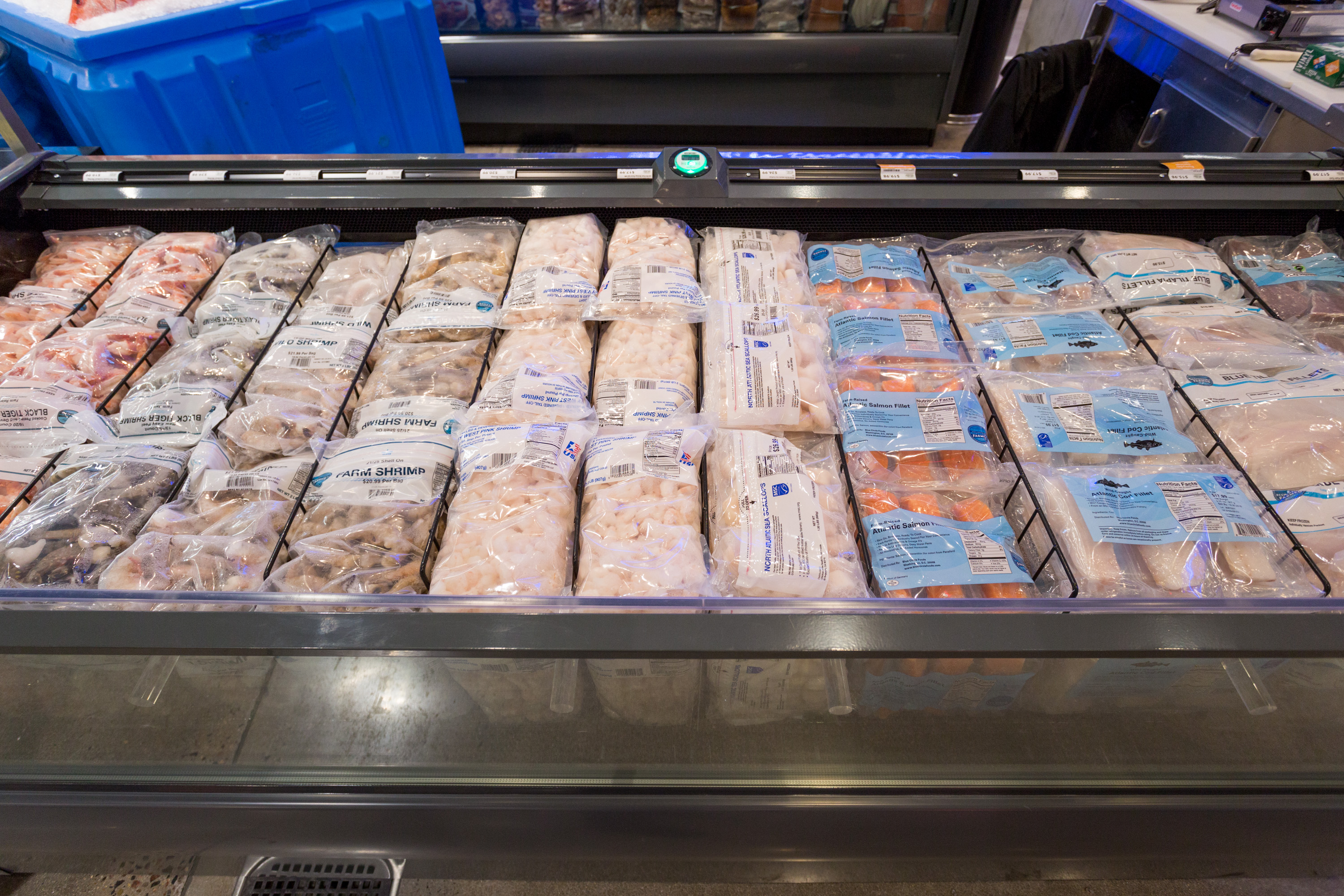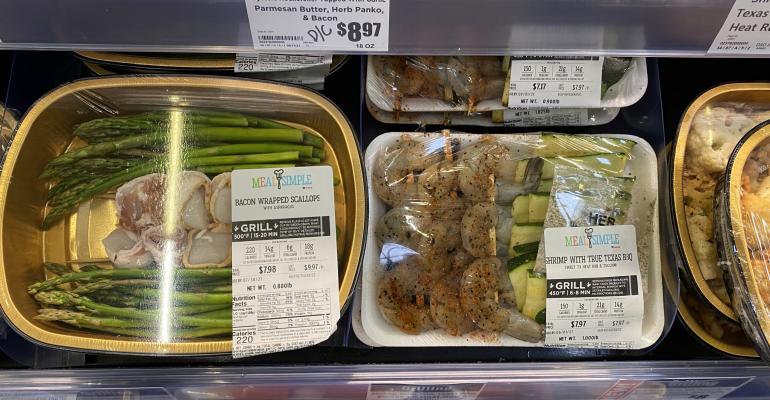Packaging is becoming an increasingly potent seafood merchandising tool.
While expanding consumer interest in healthy and more exciting eating is fueling greater seafood department revenues, packaging that can emphasize freshness, convenience and sustainability is becoming an essential element for retailers seeking to maximize sector activity, analysts said. The growing recognition of packaging’s role in boosting shopper interest, meanwhile, is resulting in the development of more functional designs.
The global seafood packaging market is forecast to have a compound annual growth rate of 5% and exceed $6.5 billion by the end of 2027, reported Albany, N.Y.-based Transparency Market Research. “Rise in adoption of high-quality packaging that extends the shelf life of seafood products is anticipated to bolster market growth,” the firm stated. “Technological advancements have opened the gates for new packaging solutions that are cost-effective and highly reliable.”
Indeed, interest is increasing for designs that maintain product freshness for longer periods, including modified atmosphere packaging (MAP), active packaging and intelligent packaging. “Though these technologies have been extensively used by the meat and poultry industries, we are starting to see seafood industry interest in evaluating and using them,” said Evelyn Watts, assistant professor and seafood extension specialist with the Louisiana State University Agricultural Center and Louisiana Sea Grant in Baton Rouge.
Modified atmosphere packaging extends the storage time of seafood and helps maintain freshness, nutrition value, color and appearance by altering the gaseous composition of the air present in the package and inhibiting the growth of microorganisms.
Active packaging releases or absorbs compounds from the seafood or the headspace of packaging, which extends product shelf life by stalling the degradative reactions of lipid oxidation, microbial growth and moisture loss. Intelligent packaging monitors and communicates the seafood condition to consumers and others throughout the value chain. “These two types of smart packaging will advance the packaging sector,” Watts said.

Effective seafood packaging can keep products fresher longer while enabling merchandisers to attach messaging and graphics to bags.
Protecting seafood from microbials, fat oxidation and enzymatic activity, which impact quality and safety, are key packaging functions, she said. “New packaging technologies look to control environmental conditions within the package to reduce product decomposition through the inhibition of bacterial growth,” she noted.
Seafood packagers also are increasingly using environment-friendly recyclable packaging, Transparency Market Research reported. “Packaging solutions made from alternative materials, including paper, paperboard and metal, are set to experience fast-paced adoption,” the firm said.
Indeed, environmental awareness is a growing shopper trend, Watts said, noting that “sustainable certifications are becoming common market-driven certifications. Consumers are not only focusing on these certifications but are expecting environmentally friendly packaging.”
Function and convenience
The popularity of ready-to-eat meals, meanwhile, is boosting the popularity of more functional trays, pouches and bags, Transparency Market Research noted. Greater consumer interest, for instance, will likely result in upgrades to, and greater adoption of, multi-layer pouches to enhance the shelf life of fish and scallops, along with improvements to oven-safe bags that minimize the spread of the distinct fishy smell in the kitchen during cooking and the risk of seafood-borne diseases, the firm reported.
“It is becoming common to find seafood products packed in a way that makes it more convenient for consumers to handle at home,” Watts said. “Easy-open and resealable packages with individually wrapped pieces result in a more enjoyable experience to the consumer.”
The greater acceptance of case-ready seafood will drive demand for traditional packaging elements as well, including film, trays, absorbent pads, bags and high-barrier film products that enhance shelf life, reported The Freedonia Group, a Cleveland-based international industrial research firm.
Vacuum skin designs also are becoming sought-after because of the packaging’s ability to maximize shelf life, resist leaks, reduce material composition and improve presentation, The Freedonia Group stated, adding that resealable pouches that enhance convenience, can hold smaller portions and have good graphic capabilities also are in demand.
Such graphics are helping to make packaging more important marketing tools, with Watts stating that merchandisers will also benefit from messaging on packages that provides information on product origin, and designs with transparent and dry antifogging films that offer greater product visibility. “Consumers love to inspect as much of the product as possible to determine quality,” she said.
Packaging innovations, meanwhile, will likely be ongoing as more consumers focus on product quality, particularly for frozen fish, reported Mintel Group Ltd., a Chicago-based market research firm. Mintel noted that nearly 60% of consumers and 67% of adults have concerns about the quality of frozen fish.
“Packaging improvements, whether in the form of additional information about the fish type or its sourcing/processing would resonate, but see-through packaging would assuage many of those concerns,” Mintel noted.





